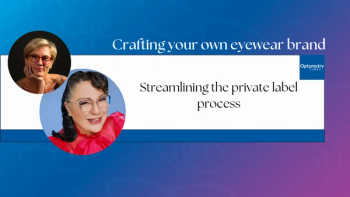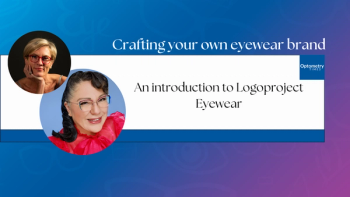
Supercharging your dispensary
Four optometrists who have found success in dispensing-Ann Hoscheit, OD; Allan Barker, OD; Bob Davis, OD; and Dori Carlson, OD-shared their tips for doctor-driven dispensing at Vision Expo East on Saturday.
New York City-Four optometrists who have found success in dispensing-Ann Hoscheit, OD; Allan Barker, OD; Bob Davis, OD; and Dori Carlson, OD-shared their tips for doctor-driven dispensing at
About 66% of ophthalmic consumers in the United Sates choose a private eyecare practitioner (ECP) for their examination services, but only 40% choose a private ECP for their eyecare products. The doctors said this trend indicates a disconnect in consumers’ mind in terms of quality of services vs. quality of product.
The doctors cautioned against “pigeon holing” patients by asking, “Will you need an appointment for eyeglasses or contact lenses?”
“If there’s one thing I’d want you to start doing differently on Monday, it’s to stop asking that question. That’s how you start bundling the patients,” says Dr. Hoscheit.
If 15% of your patients purchase both contact lenses and glasses, $67,601 drops to the bottom line per $1 million in revenue.
“Frankly, I think people need both. If you’re an eyeglass wearer, why not have contact lenses for those special occasions? If you’re a contact lens wearer, you’re going to need a backup pair of glasses,” says Dr. Barker.
Have the conversation with your patient to understand their needs, then recommend a few different products-computer glasses, lenses that would be good for night driving, sports options, or sunglasses.
“I don’t think anyone would one pair of shoes. We want to address all their needs and provide for our patients,” says Dr. Hoscheit.
Premium vs. value options
The doctors recommend choosing a premium and a value solution in order to reduce the price focus. Most practices offer too many options, which confuses the patient and encourages a price-focused discussion. The premium option keeps the focus on the option that best addresses the patient’s needs. And while the value option will still address the needs, discuss the trade-offs in words that the patient will understand.
When consulting with a patient, “bringing up new technology is critically important,” says Dr. Barker. This is the time to tell them about new contact lens materials or the latest lens that would be great for their frequent computer use.
“We always talk about the science behind the lenses because we want the patient to go out and be our promoters. We want them to tell their family and friends and be our advocates,” says Dr. Davis.
How to approach the sale
If you offer a financing plan, tell the patient about it at the beginning so the patient understands he has options if he can’t afford the second pair or sunglasses at that moment, says Dr. Barker.
Dr. Davis recommends what he refers to as the 3-step pricing conversation. When finalizing a transaction, tell the patient:
• “The total cost of your lens solution today would have been ______.”
• “Your portion (responsibility/contribution) today is ______.”
• “That’s a savings of ______.”
“When you’re meeting and exceeding a patient’s needs, you’re going to have a loyal patient,” says Dr. Hoscheit.
Other tips:
• Understand the patients’ needs
• Make recommendations-you’re the expert
• Educate the patient on why it’s the best solution for her
• Focus on the benefits of the product, not the price
• Display the finished product in style
• Re-sell what you have already sold
• Give a “thank you” gift after purchase
Newsletter
Want more insights like this? Subscribe to Optometry Times and get clinical pearls and practice tips delivered straight to your inbox.













































.png)


